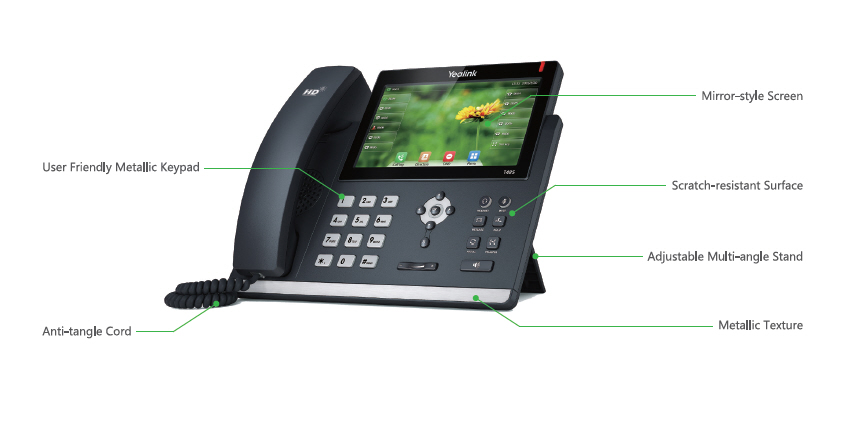Introduction
In today's fast-paced business environment, effective communication is not just a luxury—it's a necessity. As companies strive for efficiency and customer satisfaction, VoIP Phone Service the integration of messaging services into business phone systems has become a game-changer. But what features should you really look for when considering this integration? In this comprehensive guide, we’ll delve deep into the world of business phone systems and explore the essential features that can elevate communication within your organization.
Integrating Messaging Services into Your Business Phone System: The Top Features to Seek
When it comes to enhancing your business phone system, integrating messaging services is pivotal. Why? Because it brings together various forms of communication—voice calls, texts, instant messaging—into one seamless platform. This not only simplifies interactions but also improves collaboration among teams.
Understanding the Importance of Integration
Why Businesses Need Integrated Communication Systems
In an era where remote work and globalization are rampant, businesses must adopt integrated communication systems that facilitate easy and efficient interaction. An integrated approach saves time and reduces the likelihood of miscommunication.
The Benefits of Unified Messaging
Unified messaging combines different messaging formats into a single interface. This allows employees to manage their communications more effectively. Imagine having emails, voicemails, SMS, and instant messages all in one place! It’s like having a Swiss Army knife at your disposal.
Key Features to Look For in Messaging Services
1. Multi-Channel Support
What Does Multi-Channel Support Entail?
Multi-channel support means that your messaging service should allow communication through various platforms—SMS, chat apps, emails—all under one roof.
Why Is It Important?
This feature ensures that team members can communicate using their preferred method without missing any vital information. It’s about making life easier for everyone involved.
2. Real-Time Collaboration Tools
What Are Real-Time Collaboration Tools?
These tools enable instant communication among team members, allowing them to share files, ideas, or feedback on-the-fly.

How Do They Enhance Productivity?
With real-time collaboration tools in place, decisions can be made quicker than ever before. Think about it: no more waiting for email responses!
3. Advanced Security Features
Why Is Security Essential in Messaging Services?
In today’s digital age, data breaches are a significant concern for businesses. Thus, ensuring that your messaging services have robust security measures is non-negotiable.
What Should You Look For?
Look for end-to-end encryption and secure access controls as essential security features to protect sensitive information.
4. User-Friendly Interface
Why Does the User Interface Matter?
A clean and intuitive user interface simplifies usage for employees at all skill levels.
How Can It Affect Adoption Rates?
If employees find the interface cumbersome or confusing, they may resist using it altogether—a recipe for inefficient communication!
5. Scalability Options
What Does Scalability Mean?
Scalability refers to how easily you can add or remove users from your system based on changing business needs.
Why Is Scalability Important?
As your business grows or changes direction, your communication needs will evolve too. A scalable solution helps you adapt without needing a complete overhaul.
6. Integration with Existing Tools
What Types of Tools Should Be Integrated?
Look for integrations with CRM systems, project management tools, and other software platforms already used within your organization.
How Can This Benefit Your Workflow?
Seamless integration means less time switching between apps and more time focusing on what matters most—your business goals!
7. Customizable Notifications and Alerts
What Are Customizable Notifications?
Customizable notifications allow users to control what alerts they receive and how often they get them.
Why Is This Feature Crucial?
Not all messages require immediate attention; having this feature helps prioritize important communications without overwhelming users with constant alerts.
8. Voice-to-Text Capabilities
What Are Voice-to-Text Capabilities?
This feature converts spoken words into written text messages or notes automatically.
How Can It Enhance Efficiency?
Imagine being able to dictate messages while on the go! This will save time and keep communications fluid even during busy hours.
FAQ Section
1. What are business phone systems?
Business phone systems refer to telecommunication frameworks designed specifically for organizations to handle internal and external communications efficiently.
2. How do I choose the right business phone system?

3. Can I integrate my existing tools with new messaging services?
Yes! Most modern messaging services offer integration capabilities with popular tools like CRM software or project management platforms.
4. What are some common security features to look for?
Common security features include end-to-end encryption, secure login methods (like two-factor authentication), and regular security audits by providers.
5. How does multi-channel support improve communication?
Multi-channel support allows teams to communicate via various platforms (like SMS or email), ensuring that everyone can engage in a manner they're comfortable with while keeping all messages centralized.
6. What if my company experiences rapid growth? Will my phone system accommodate this change?
Choosing a scalable business phone system ensures you can easily add new users or features as needed without disrupting operations significantly.
Conclusion
Integrating messaging services into your business phone system is no longer just an option; it's essential for optimizing communication workflows in today’s dynamic marketplace. By focusing on key features such as multi-channel support, real-time collaboration tools, advanced security measures, user-friendly interfaces, scalability options, tool integrations, customizable notifications, and voice-to-text capabilities—you set up your organization not just to survive but thrive in its respective industry!
Through careful consideration of these elements while selecting suitable solutions tailored specifically for your needs—and understanding that effective communication fosters growth—you’ll undoubtedly unlock potential pathways towards increased productivity and success!
So why wait any longer? Start exploring how integrating messaging services can transform your business today!